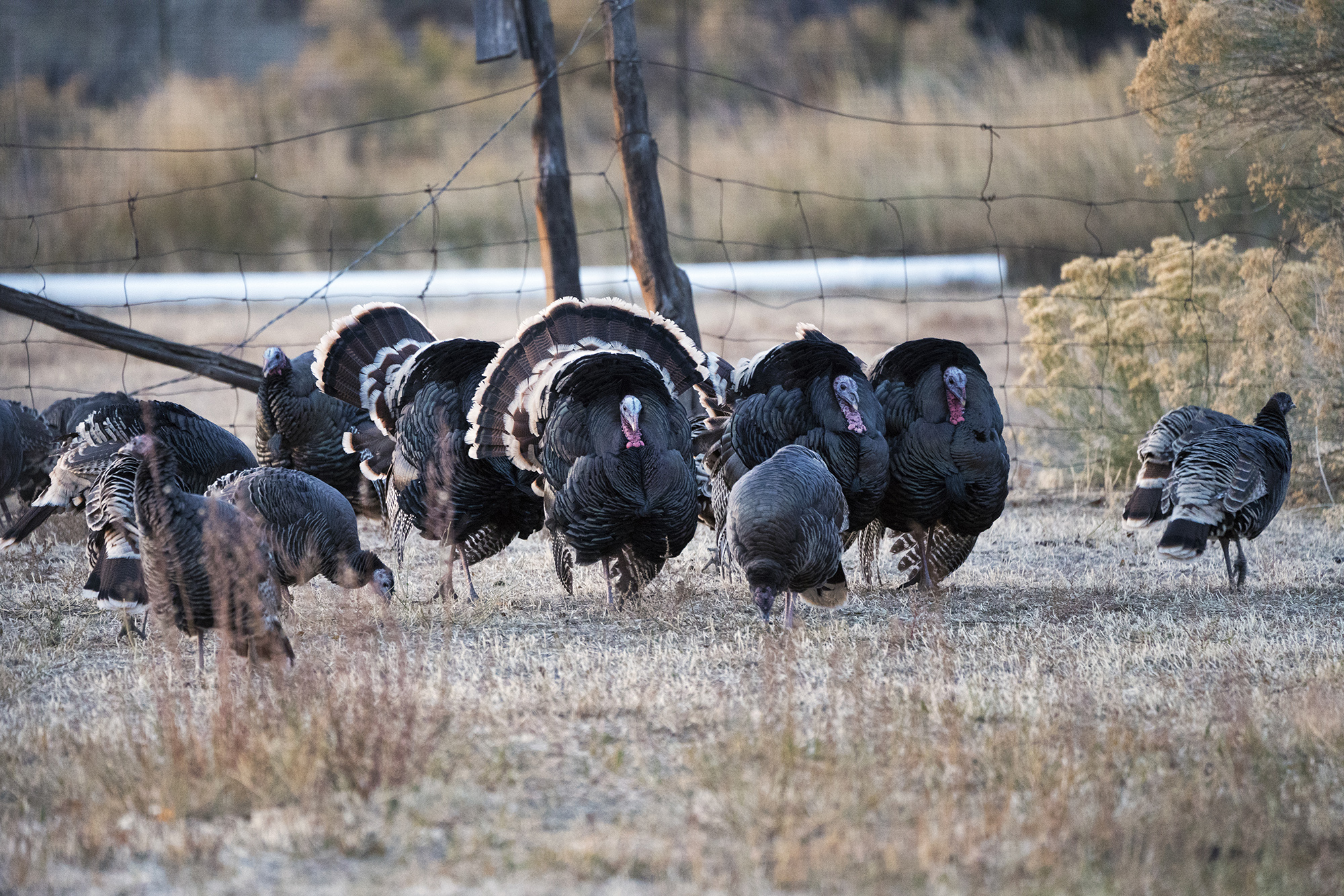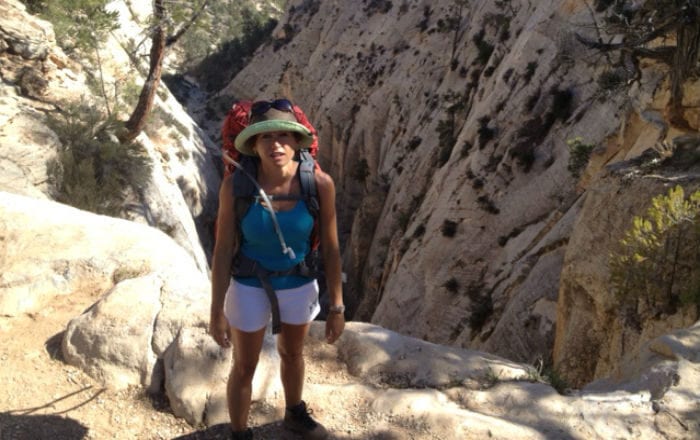
What Hunters Should Know For The 2024 Utah Spring Turkey Hunt
Utah’s spring general-season turkey hunts are about to get underway, and if you like the idea of getting outdoors and harvesting your own delicious bird, it’s not too late to buy a permit and research an area to hunt.
Utah’s youth turkey hunt runs from April 26-28, and the spring general-season turkey hunt runs from April 29 to May 31. Youth can continue hunting during the general-season hunt if they don’t harvest during the youth hunt. The limited-entry hunt began on April 13 and will end on April 25.
Here’s what hunters should know about the upcoming general season and youth hunts:
Utah Turkey Populations
There are two turkey subspecies that live in Utah: Rio Grande and Merriam’s. There are currently between 25,000-30,000 wild turkeys throughout the state.
“Our populations declined the last two years, due to drought conditions for multiple years, and then coupled with the severe winter conditions this year,” DWR Upland Game Coordinator Heather Talley said. “However, the wet spring last year provided the ideal conditions for brood rearing last summer. In some areas of the state, this increased production and poult survival. Due to the milder conditions this past winter combined with enough snowfall to produce moisture this spring, we expect to see an increase in production in more areas of the state again this year and an overall increase in the statewide population.”
Where To Hunt
Central Utah
There are some great areas to hunt turkeys in central Utah, and most areas with suitable habitat support huntable populations of turkeys. In particular, Provo Canyon, Hobble Creek, Spanish Fork Canyon and Payson Canyon have healthy numbers of turkeys. Turkey populations are also currently healthy in the Wasatch and Nebo areas.
Turkey numbers in Tooele County have decreased quite a bit due to two drought years followed by two very snowy years. Turkeys can be found in the canyons east of Tooele and most canyons in the Oquirrh Mountains. As always, be mindful of property ownership and obtain written permission from landowners in order to hunt on private property.
Southern Utah
Favorable conditions in southern Utah have helped turkey numbers rebound the past two years, and hunters should expect a better turkey hunt in this part of the state this year than in past years. In particular, turkey hunting in the Pine Valley, Zion, Panguitch Lake, Mt Dutton and Paunsaugunt areas should be better this year than in previous years. While the turkey populations in these areas have not fully recovered from previous drought years, there was good chick production last year, so hunters should see more birds in the field this year. Hunters should focus their efforts around perennial streams and follow the green up.
Hunters can also find turkeys in the Pahvant and Beaver areas, most often in the major drainages. In the Oak Creek area, turkeys are more concentrated in drainages with a year-round water source and riparian habitat. Turkey hunting will be fair this year in the Monroe and Fishlake areas, but should have more turkeys than last year, since winter die off was mild.
Turkey populations on Boulder Mountain were greatly bolstered with good spring hatches and high poult survival the last two years. Hunting this spring and fall should be good in the Boulder Mountain area. The Thousand Lakes area has a smaller turkey population than the surrounding areas and usually remains stagnant due to limited habitat.
Northeastern Utah
Turkey numbers in the northeastern part of the state have decreased a little from previous years. The hard winter in 2022-2023 pushed most of the birds on the south slope of the Uintas down to private lands at lower elevations, and the turkeys still have not all migrated back up to U.S Forest Service lands.
Hunters should target the corridors along the Duchesne River, the Green River and the Ashley Creek drainage, which should all be good areas to hunt turkeys this year. Lower agricultural areas should also have good turkey hunting, but many of these areas are private property, so hunters will need to get written permission from landowners before hunting. There are also pockets of turkeys throughout much of the Book Cliffs area and in the middle and lower areas of several major drainages across the northern and southern slopes of the Uinta Mountains.
Northern Utah
Hunters can expect to see more turkeys in the northern part of the state as the mild winter has resulted in lower mortality rates this year. Turkeys can be found on private property around Morgan, Croydon, Huntsville, Eden and Mountain Green, but hunters must get written permission from the landowner to hunt on private property.
Turkeys can also be found on public land in Cache Valley (including Blacksmith Fork Canyon), the Richmond Wildlife Management Area (along Cherry Creek), the Wellsville Range above Wellsville and Mendon, and Walk-in Access areas around Clarkston. In Box Elder County, there are turkeys on the Raft River Mountains near Clear Creek, One Mile Creek, Johnson Creek and Wildcat Creek. There are also turkeys on the Pilot Mountain Range.
Southeastern Utah
The turkey brood production last year was above average in southeastern Utah, due to the excellent precipitation. As a result, turkey hunting should be a bit better than the previous several years. Hunters can find Merriam’s turkeys in the La Sal and Abajo mountains in ponderosa pine habitats. Some of the upper-elevation habitats may still be inaccessible due to persistent snowdrifts, but so far, the snowmelt appears to be progressing well, and there is plenty of huntable habitat.
Popular areas to find Rio Grande turkeys in this part of the state include along the Colorado and Green rivers, as well as many of their tributaries. These tributaries include:
- The San Rafael River
- Price River
- Range Creek
- Huntington Creek
- Ferron Creek
- Muddy Creek
- Many of the drainages along the southern portion of the Book Cliffs, including Nash Wash and Cottonwood Canyon
There is also a sizable turkey population along the Fremont River, between Hanksville and Caineville. Be aware that much of the good Rio Grande turkey habitat in this part of the state occurs on private lands with isolated areas of public land. Hunters should secure written permission prior to hunting on private lands. There are also several Walk-in Access properties in the Hanksville area that can provide some public access to private lands.
General Tips
Rio Grande turkeys are usually found at lower elevations. River bottoms scattered with cottonwood trees and areas composed of mostly oak and pinyon-juniper woodlands are some of their favorite spots. Merriam’s turkeys, on the other hand, are typically found in ponderosa pine forests at higher elevations.
If you’re planning to hunt, try to get out and scout a few days before your hunt begins. Becoming familiar with the area and locating where the turkeys are is key to a successful hunt. You should spend time observing the turkeys’ daily patterns so that during the hunt, you can set up in an area where the birds will be active. Typically, more turkeys are harvested between 10 a.m. and 2 p.m. than during any other time of day.
“Turkeys are often found on private property, so be aware of the land ownership in the area you’re hunting and remember that you must get written permission from the landowner before you can hunt on their property,” Talley said. “Also, calls and decoys can greatly increase your success, so take time to practice with those beforehand. And lastly, turkeys have incredible eyesight, so be sure to wear good camo and sit very still.”
Buying A Turkey Permit
Permits for Utah’s statewide spring general-season turkey hunt went on sale on March 5. You can buy a permit for the statewide general season anytime before the hunt ends on May 31. General-season permits are available online or at a variety of license agent locations and DWR offices.
For more information on season dates and permits, check the 2023-24 Utah Upland Game & Turkey Guidebook. For information on legal weapon types, see pages 23-24 in the guidebook, and note that rimfire firearms are not legal for the spring turkey seasons. The free guidebook is available on the DWR website or at hunting license agent locations and DWR offices.





Someone was seen nabbing wild turkeys in our town of Salt Lake City, Utah this past Wednesday, April 24, 2024. These are icons of our city, lovely free-ranging birds who had beauty, joy, and grace to the West Side. They are featured on town murals adorning city businesses. The wild turkeys were standing near Walnut Circle. The person who took them was in a white extended cab truck with a white canopy on the back and a frosted glass white light on top of the cab. Is it legal to steal wild turkeys right out of someone’s yard or sidewalk in the heart of Salt Lake City? Is April 24 outside the dates of the Spring Turkey hunt period in Utah in 2024? If so, wouldn’t this be considered illegal poaching? No one seems to have concrete answers to my questions. Aren’t wild turkeys protected in Utah? Does the intent of the person taking the turkey matter? Someone said the wild turkey taker told them he was going to take the turkeys to put with his own turkeys at his trailer. Aren’t wild turkeys like feral cats, stressed by being confined and likely to hurt themselves trying to escape a pen while seeking freedom? Are the stolen turkeys’ mates and offspring mourning their family members who suddenly disappeared? Is it legal to sell wild turkeys’ eggs in Utah? Thanks for your answers to these important questions. Who can answer them for me?